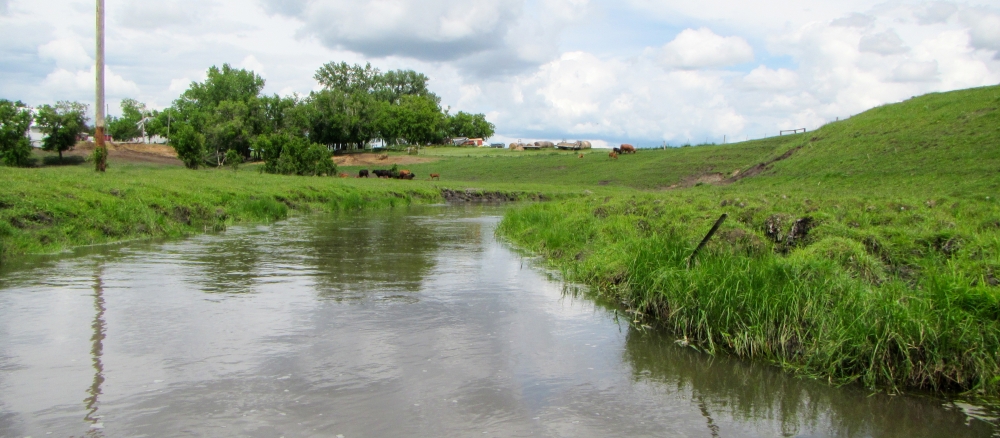The Buffalo River Watershed covers more than 1,100 square miles in portions of Becker, Clay, Otter Tail, and Wilkin counties. The watershed transitions from hardwood forests at its headwaters, with many wetlands and lakes, to a prairie landscape with very few wetlands and lakes, which has been largely converted to farmland. The watershed is largely agricultural (row crops and pasture), accounting for more than 70% of the overall watershed acres. Much of the watershed is prone to flooding due to a high percentage of agriculture land, flat topography, and poorly drained soils. As a result, much of the landscape has been altered to increase drainage and improve agricultural production.
Development pressure is moderate to considerable in some areas. The largest population centers are located along the US Highway 10 corridor or the Interstate-94 corridor, including Glyndon, Hawley, Lake Park, Audubon, and Barnesville. Resource concerns relating to urban development include runoff from urban stormwater and flood damage to urban infrastructure.
Main water quality concerns in the watershed include excess nutrients, bacteria, and sediment levels in rivers, streams, and lakes. Intensive monitoring shows that E. coli and turbidity are the most prevalent factors for rivers and streams. Shallow lakes in the watershed have issues with water clarity, chlorophyll, and nutrients leading to eutrophication.
Important resource concerns within the watershed might include wetland restoration and improvement, surface water quality, flood damage reduction, wildlife habitat, and soil erosion from wind and water.
Monitoring and assessment
Strategy development for restoration and protection
- (MPCA approval 8/9/2016)
- (EPA approval 2/16/2017)
In summer 2020, the Becker County SWCD completed work on the final pieces of a large, multifaceted sediment reduction effort — a 2,000-foot pipe project that addressed one of the top sources of sediment in the watershed identified in a 2015 report. This project was one in a list of many similar efforts in the Upper Buffalo River Watershed, where multiple sources of local, state, and federal funding have been used to target agricultural best management practices and stream channel improvements. These efforts aim to reduce sediment, nutrient, and bacteria loading to the Buffalo River, in hopes that the river will be restored and eventually removed from Minnesota’s Impaired Waters List.
More information
- Clay County Soil and Water Conservation District
- Wilkin Soil and Water Conservation District
- West Otter Tail Soil and Water Conservation District
- Becker Soil and Water Conservation District
- Buffalo-Red River Watershed District
- Buffalo-Red River Comprehensive Watershed Management Plan
- White Earth Nation Division of Natural Resources
